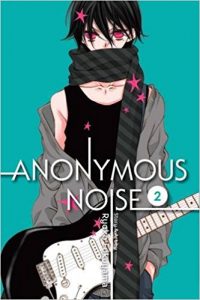The Girl From the Other Side: Siúil, A Rún Volume 1 by Nagabe
This title from Seven Seas is totally the opposite of what I tend to expect from the publisher. The Girl From the Other Side is a fascinating dark fairy tale that has overtones of a philosophical thought experiment, while still presenting the reader with compelling art and characters.
Shiva lives with her teacher, a man with an affliction who appears to be half-man, half beast. They live in a house and venture out to an abandoned village to forage for food and household items. Shiva thinks that her aunt is going to appear soon to pick her up, but she’s actually been abandoned and her teacher can’t bring himself to tell her. There’s a divide between the remains of humanity, who seem to have retreated behind walls, and the land overtaken by “The Others”, people who have been cursed or perhaps contracted some sort of disease that robs them of their humanity.
Shiva’s teacher attempts to keep some sort of regular routine, and while Shiva runs around like the extremely resilient little girl that she is, the reader is filled with a growing sense of unease as more and more of her world is filled in. Is food going to run out at some time? Why are The Others, or anyone suspected of being in contact with them hunted down and killed? Is Shiva’s teacher different from the rest of The Others, and how did that manage to happen? How has Shiva even managed to survive up until this point? I haven’t read a manga before that manages to blend heartwarming slice of life moments with supernatural horror, but The Girl From the Other Side pulls it off masterfully. I’m not actually sure yet if The Others should be dreaded quite as much as the humans who are attempting to defend their society from them though.
The art in The Girl From the Other Side fits the themes of the story perfectly. Instead of a more generic or commercial style, Nagabe’s illustrations are filled with dark cross-hatching and tones that give the panels a feeling of an antique woodcut. Shiva is rendered almost entirely in white, providing a visual counterweight to the dark backgrounds. Shiva’s teacher is rendered in darkness, with the details of his face difficult to discern, making the condition of “The Others” seem more mysterious and frightening.
There’s an all ages rating on this manga, which I find odd. While there might be no sexual content and not much overt violence, the themes of the manga are both grim and emotionally challenging, and it isn’t a manga I would recommend for all audiences. That being said, this is one of the most unique and well-executed manga that I’ve read in quite some time, and I highly recommend it.





Recent Comments